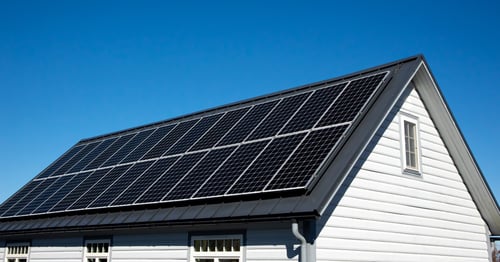Common Fossil Fuels
About 73% of single-family homes in the United States are burning inefficient and dirty fossil fuels. If you’re one of them, there’s nothing to feel bad about. You’re here because you’re considering a change, and that’s a step in the right direction. Converting your home to be a more carbon-neutral entity is great for the health of those living within the home and your community. With added conversion tactics, utilizing electricity with a sustainable renewal generation system in play can be great for your wallet as well.

Propane
Propane is a fossil fuel used around the home for heating, cooking, and powering appliances such as the dryer, water heater, and more. While it’s versatile in use, it is not a renewable form of energy and adds to your total carbon footprint. It is often marketed as a “green fuel” source because its carbon emission is low compared to other combustible fuel sources. But since it does create emissions, it cannot be considered a complete “green alternative” (to, say, oil, for instance).
Natural gas
Natural gas, like propane, is used for heating and cooking purposes and has long been considered a more environmentally friendly alternative to oil. But just like propane, it is a fossil fuel and does create emissions, thus expanding your carbon footprint. Recent studies have shown that natural gas emits more methane into the atmosphere than initially thought. Global methane emissions have spiked dramatically since 2002, mostly due to a serious increase in natural gas extraction in the U.S.


Home heating oil
While oil furnaces burn cleaner today than they did decades ago, they’re still not “clean” in the grand scheme of things. Oil-burning furnaces have been commonplace in single-family homes for quite some time due to convenience and affordability when compared to natural gas and propane. That said, oil is, like the others, a fossil fuel that emits pollutants into the atmosphere and causes grime and buildup within your furnace, which can be the cause of costly repairs and operative inefficiencies.
Why electric conversion is a better option
We’re going to keep this brief. Electric sources are the most efficient means of producing energy in your home. Of all the heating furnaces mentioned above, an average efficiency rating that is deemed acceptable is a unit that fits into the 78% to 96% AFUE (annual fuel utilization efficiency) range. Electric furnaces, on the other hand, have a 100% AFUE rating. Yes. 100%. They convert all their energy into heating and lose nothing to exhaust. Pretty impressive.





